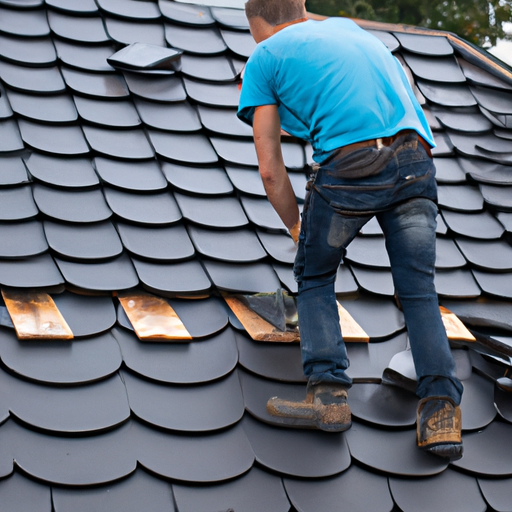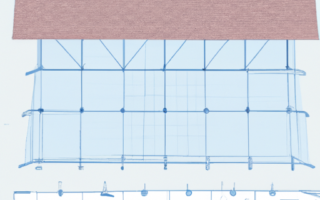Roof Construction 101: A Guide to Types, Materials, and Installation Techniques
In the construction industry, roof construction plays a vital role in providing shelter and protection to buildings. Proper roof installation is crucial for long-term durability and efficiency. This comprehensive guide will walk you through the fundamentals of roof construction, including the different types of roofs, materials used, and installation techniques.
Types of Roofs
Roofs come in various styles, each with its own unique characteristics and advantages. Here are some of the most commonly used types of roofs:
- Gable Roof: This popular roof type features two sloping sides that meet at a central ridge. Gable roofs are known for their simple design and effective water drainage.
- Hip Roof: With slopes on all four sides, hip roofs provide excellent stability and durability against high winds and snow. They also offer additional living space in the form of attics or vaulted ceilings.
- Flat Roof: Flat roofs are typically found on commercial buildings. While they lack slope, they are cost-effective and allow for easier maintenance and installation of equipment.
- Gambrel Roof: This roof style resembles a barn roof and offers generous attic space. Gambrel roofs can be found mainly on residential properties and provide a classic aesthetic.
- Shed Roof: Also known as a skillion roof or lean-to roof, shed roofs have a single slope. They are often used on sheds, garages, and extensions.
Roofing Materials
The choice of roofing material depends on factors such as budget, climate, and aesthetic preferences. Here are some of the commonly used materials in roof construction:
- Asphalt Shingles: Affordable and easy to install, asphalt shingles are the most popular roofing material. They are available in a variety of colors and styles, making them a versatile choice for many homeowners.
- Metal Roofing: Metal roofs offer exceptional durability and are resistant to fire, rot, and pests. They come in different metals such as steel, aluminum, and copper, providing a range of aesthetic options.
- Clay or Concrete Tiles: Clay or concrete tiles have a distinctive look and are known for their longevity. They are ideal for Mediterranean or Spanish-style homes but can be heavier and require additional structural support.
- Slate: Slate is a natural stone that offers an elegant and sophisticated look to any building. It is durable and can last for a century or more, making it a popular choice for upscale properties.
- Wood Shakes: Wood shakes provide a rustic charm and natural insulation. They are eco-friendly and can create a cozy atmosphere. However, wood shakes require regular maintenance and can be vulnerable to fire.
Installation Techniques
The proper installation of a roof is crucial to ensure its longevity and effectiveness. It is essential to hire skilled professionals who follow industry-standard techniques. Some common installation techniques include:
- Deck Preparation: The roof deck should be properly prepared, ensuring it is clean, dry, and free of any damage. This step helps in preventing moisture penetration and ensures a solid foundation for the roofing material.
- Underlayment Installation: A waterproof underlayment is laid over the roof deck before installing the final roofing material. It provides an extra layer of protection against water infiltration.
- Flashing: Flashing is used to seal vulnerable areas such as roof valleys, chimneys, and vents. It prevents water from seeping into these susceptible spots and causing potential leaks.
- Roofing Material Application: The chosen roofing material is then applied carefully, following manufacturer guidelines and industry best practices. This ensures proper alignment, secure attachment, and overall structural integrity.
- Finishing Touches: Once the roofing material is in place, the final touches include installing ridge caps, seals, and trim to ensure proper aesthetics and weather resistance.
Understanding the basics of roof construction, including the types of roofs, materials used, and installation techniques, is essential for any homeowner or construction professional. By familiarizing yourself with these concepts, you can make informed decisions and ensure the longevity and functionality of your roof.
The Ultimate Roof Construction Handbook: Exploring Different Types, Materials, and Installation Methods
Building or renovating a house can be an exciting yet challenging endeavor, especially when it comes to roof construction. The roof not only protects the inhabitants from the elements but also adds to the overall aesthetic appeal of the structure. Therefore, it is important to have a comprehensive understanding of the different types, materials, and installation techniques involved in roof construction.
When exploring roof construction, one of the key aspects to consider is the type of roof design that best suits your needs. Some popular choices include gable roofs, hip roofs, mansard roofs, and flat roofs. Each design has its own unique characteristics and advantages, such as increased attic space or better wind resistance.
Once the roof design is selected, the next crucial step is choosing the right materials. Common roofing materials range from traditional options like asphalt shingles, clay tiles, and slate to more modern alternatives such as metal, concrete, and synthetic materials like polymer. Each material has its own pros and cons in terms of durability, aesthetics, cost, and maintenance requirements.
Proper installation techniques are also essential for a long-lasting and secure roof. Whether you are a DIY enthusiast or hiring a professional contractor, it is crucial to understand the intricacies of roof installation. This includes preparatory steps such as roof decking and underlayment installation, as well as the actual placement and attachment of roofing materials. Proper insulation, ventilation, and waterproofing are also vital to ensure the longevity and energy efficiency of the roof.
Additionally, it is important to consider local building codes and regulations when planning a roof construction project. Certain roof designs and materials may be more suitable for specific climates or geographical locations. Therefore, consulting with local authorities or experts in the field can help ensure compliance and optimal performance of the roof.
In conclusion, constructing a roof involves various factors that need careful consideration. By exploring different types, materials, and installation techniques, homeowners can make informed decisions that meet their requirements in terms of functionality, aesthetics, and budget. The ultimate roof construction handbook serves as a valuable resource to guide individuals through the process, empowering them to create a secure and visually appealing roof for their homes.



